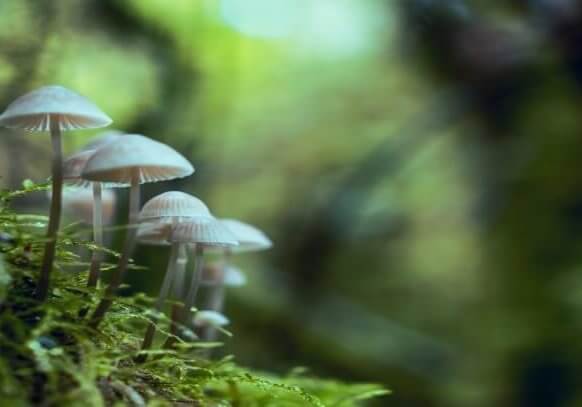Excerpts from Rebekah's Journal
Baleigh & Rebekah's Bird List
April
14th: Turkey Vulture, Black-throated Green Warbler, Eastern Bluebird, Tufted Titmouse, Ovenbird, Barred Owl, Broad-winged Hawk
15th: Eastern Towhee, Eastern Phoebe, Red-eyed Vireo, Red-bellied Woodpecker
16th: American Robin, Northern Cardinal, Blackburnian Warbler
17th: Carolina Wren, Mourning Dove, Black-and-white Warbler, Wood Thrush
18th: Pileated Woodpecker, Blue Jay
20th: Ruffed Grouse, Common Raven
21st: Scarlet Tanager, Carolina Chickadee, Northern Parula
23rd: American Redstart
25th: White-breasted Nuthatch
28th: Barn Swallow, Cooper’s Hawk
May
4th: Eastern Wood-pewee, Gray Catbird
5th: Northern Mockingbird
6th: Canada Goose, Indigo Bunting
8th: Downy Woodpecker, Song Sparrow, Chestnut-sided Warbler, Brown Thrasher
9th: Veery
12th: Wild Turkey, Rose-breasted Grosbeak
14th: Ruby-throated Hummingbird
15th: Mallard, Eastern Whip-poor-will
16th: Red-winged Blackbird, Chipping Sparrow
18th: Great Blue Heron
20th: Field Sparrow
21st: Warbling Vireo
22nd: American Goldfinch
25th: Yellow-billed Cuckoo
June
8th: Bald Eagle
July
29th: White-throated Sparrow
August
19th: Common Loon
Managing your “fur-workers”: Supporting your pets while working from home
A downside of working from home is that many of my important work conversations are interrupted by what I have begun to refer to as my fur-workers,” said Candace Croney fondly describing her cat, Bernie, and Havanese mix Desi. “They like to help me out by announcing the end of the world is coming because a delivery arrived or walk across my keyboard to end a web conference without my consent.”
Read Full Story >>>Friend or Fungi? The complex relationship between fungi and climate change
The relationship between fungi and climate change is somewhat of a paradox, according to Cathie Aime, professor of botany and plant pathology, but that’s in keeping with these enigmatic and often misunderstood organisms.
As climate change radically alters global landscapes and ecosystems, fungi that are damaging to crops and threaten agricultural industries can become more prevalent. A recent example of this is the fungus that causes coffee rust (Hemileia vastarix), which has devastated coffee crops and the industry in Columbia and Central America and destroyed the livelihoods of millions throughout Latin America. An increase in temperatures, rainfall and extreme weather events, conditions favored by this fungus, accelerated the epidemic.
Read Full Story >>>Graduate Ag Research Spotlight: Jonathan Knott
JONATHAN KNOTT “In understanding how human-related impacts are changing the world, I’m working toward helping future generations.” — Jonathan Knott, PhD candidate, Forestry and Natural Resources THE STUDENT Jon Knott says that while growing up in Holland, Michigan, he was a “go-out-and-explore” kind of kid. He credits his love of the outdoors to hunting…
Read Full Story >>>Managing your “fur-workers”: Supporting your pets while working from home
A downside of working from home is that many of my important work conversations are interrupted by what I have begun to refer to as my fur-workers,” said Candace Croney fondly describing her cat, Bernie, and Havanese mix Desi. “They like to help me out by announcing the end of the world is coming because a delivery arrived or walk across my keyboard to end a web conference without my consent.”
Read Full Story >>>Friend or Fungi? The complex relationship between fungi and climate change
The relationship between fungi and climate change is somewhat of a paradox, according to Cathie Aime, professor of botany and plant pathology, but that’s in keeping with these enigmatic and often misunderstood organisms.
As climate change radically alters global landscapes and ecosystems, fungi that are damaging to crops and threaten agricultural industries can become more prevalent. A recent example of this is the fungus that causes coffee rust (Hemileia vastarix), which has devastated coffee crops and the industry in Columbia and Central America and destroyed the livelihoods of millions throughout Latin America. An increase in temperatures, rainfall and extreme weather events, conditions favored by this fungus, accelerated the epidemic.
Read Full Story >>>Graduate Ag Research Spotlight: Jonathan Knott
JONATHAN KNOTT “In understanding how human-related impacts are changing the world, I’m working toward helping future generations.” — Jonathan Knott, PhD candidate, Forestry and Natural Resources THE STUDENT Jon Knott says that while growing up in Holland, Michigan, he was a “go-out-and-explore” kind of kid. He credits his love of the outdoors to hunting…
Read Full Story >>>

